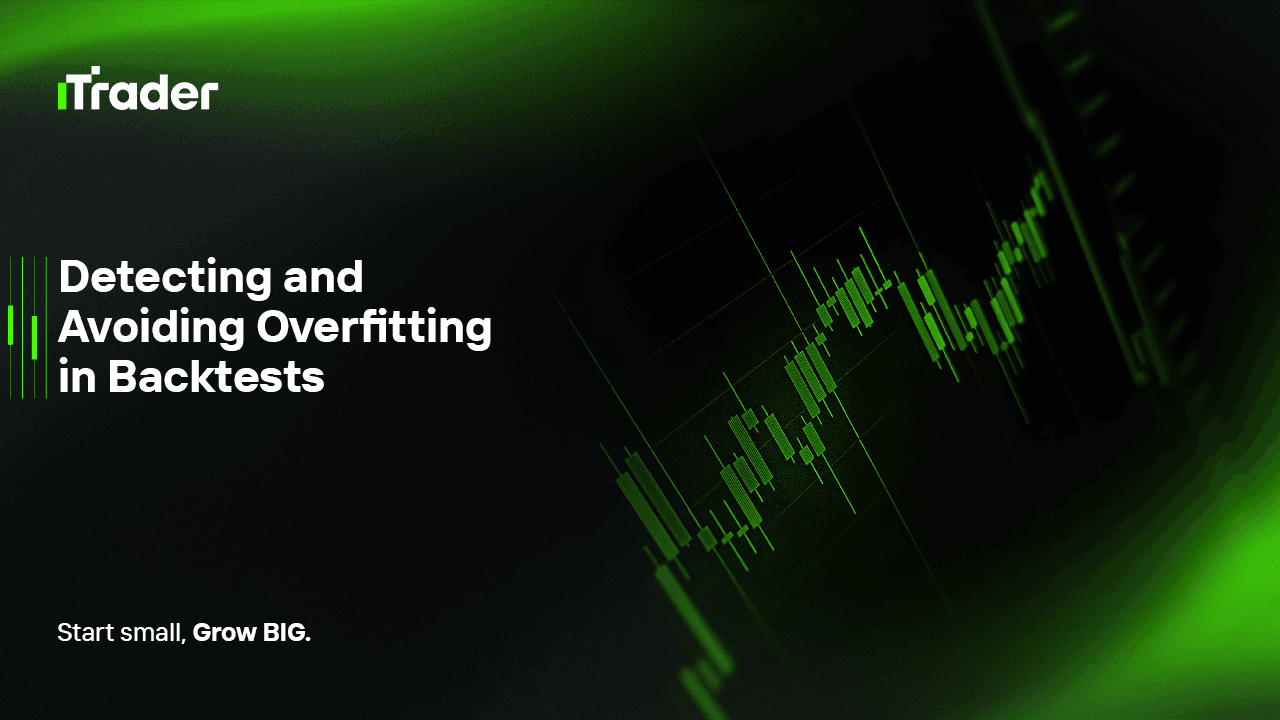2025-09-01
Backtesting is one of the most powerful tools available to traders and system developers. It allows you to evaluate whether your trading idea would have worked in the past, giving a degree of confidence about how it might perform in the future. However, backtesting also carries a hidden danger: overfitting.

Overfitting occurs when a strategy is optimized to perform exceptionally well on historical data but fails when exposed to new market conditions. For prop traders, whose capital allocation and career opportunities depend on proving the robustness of their strategies, avoiding overfitting is not just a technical detail—it is a survival necessity.
This blog will examine the nature of overfitting in backtesting, why it poses serious risks, and how prop traders can systematically protect themselves from this pitfall.
Overfitting happens when a model or trading system becomes overly tuned to past data. In practice, this means your strategy is not capturing genuine market structure but rather random noise.
For example, imagine you design a moving average crossover system and then spend hours adjusting parameters until the equity curve looks perfect. If the rules are too specific—say, a 47-period MA crossing a 113-period MA only under certain market hours—the system might fit past data exceptionally but will likely fail in live markets.
Overfitting gives a false sense of security. The equity curve may look smooth, the drawdowns minimal, and the profit factor high, but all of it is an illusion built on hindsight.
For independent traders, overfitting is already a risk. For prop traders, however, the stakes are much higher:
In short, overfitting is not just a statistical issue. It can destroy a trader’s chance at a career within prop trading.
Recognizing overfitting early can save time and resources. Some warning signs include:
If a backtest seems “too good to be true,” it probably is.
The more parameters your strategy has, the more opportunities for overfitting. Simple strategies with clear logic tend to generalize better. For example, a moving average crossover with one or two filters is less prone to overfitting than a system with ten interdependent conditions.
Always divide your data into in-sample (for model development) and out-of-sample (for validation). A robust system should perform reasonably well on both. If it collapses out-of-sample, it is overfit.
Instead of a single backtest, perform multiple rolling optimizations and validations. This simulates live conditions and shows how the strategy adapts across different market environments.
Every trading rule should have a rationale. For example, trend-following systems should work because of market momentum, not because “it looked good” in historical data. If you cannot explain why a rule works in economic terms, it is probably a curve-fit artifact.
Testing hundreds of indicators and parameter combinations increases the chance of finding a false positive. Limit the number of tests and ensure that results make sense outside of statistics.
Borrowed from machine learning, cross-validation splits data into multiple folds. Each fold is tested separately to see if performance is consistent. This reduces the likelihood of tailoring a model to one specific dataset.
Randomizing the order of trades in backtests helps reveal whether performance depends on a lucky sequence of wins and losses. If results remain stable under randomization, the system is more robust.
By resampling historical returns, bootstrapping allows you to see how sensitive the strategy is to variations in the dataset. Stable results indicate lower overfitting risk.
In algorithmic models, regularization techniques penalize complexity. This prevents the system from placing too much weight on minor historical anomalies.
Overfitting is not just a technical issue; it is also psychological. Traders often fall into these traps:
Being aware of these biases is the first step to avoiding them.
Prop traders can follow a structured workflow to reduce overfitting risk:
Prop firms don’t expect perfection. They expect robustness. This means:
The goal is not to eliminate all losing trades but to show consistent decision-making under varied conditions.
Overfitting in backtesting is one of the biggest threats to prop traders. A strategy that looks flawless on paper can quickly collapse in live trading, leading to wasted time, lost opportunities, and failed evaluations.
The solution is not to abandon backtesting but to use it wisely. By keeping strategies simple, validating them across different datasets, applying robustness tests, and grounding every rule in sound market logic, traders can avoid the trap of overfitting.
For prop traders, the ability to prove that your strategy can withstand real market conditions is the ultimate edge. A robust but imperfect system will always outperform a fragile curve-fitted one in the long run.
© 2025 iTrader Global Limited | 회사 등록번호: 15962
iTrader Global Limited는 코모로 연방 앙주앙 자치섬의 무잠두(Hamchako, Mutsamudu)에 위치하고 있으며, 코모로 증권위원회(Securities Commission of the Comoros)의 인가 및 규제를 받고 있습니다. 당사의 라이선스 번호는 L15962/ITGL입니다.
iTrader Global Limited는 “iTrader”라는 상호로 운영되며, 외환 거래 활동에 대한 인가를 받았습니다. 회사의 로고, 상표 및 웹사이트는 iTrader Global Limited의 독점 재산입니다.
iTrader Global Limited의 다른 자회사로는 iTrader Global Pty Ltd가 있으며, 이 회사는 호주 회사 등록번호(ACN): 686 857 198을 보유하고 있습니다. 해당 회사는 Opheleo Holdings Pty Ltd의 공식 대리인(AFS 대표 번호: 001315037)이며, Opheleo Holdings Pty Ltd는 호주 금융서비스 라이선스(AFSL 번호: 000224485)를 보유하고 있습니다. 등록 주소는 Level 1, 256 Rundle St, Adelaide, SA 5000입니다.
면책 조항: 이 회사는 본 웹사이트에서 거래되는 금융 상품의 발행인이 아니며 이에 대해 책임을 지지 않습니다.
위험 고지: 차액결제거래(CFD)는 레버리지로 인해 자본 손실이 빠르게 발생할 수 있는 높은 위험을 수반하며, 모든 사용자에게 적합하지 않을 수 있습니다.
펀드, CFD 및 기타 고레버리지 상품의 거래에는 전문적인 지식이 요구됩니다.
연구 결과에 따르면 레버리지 거래자의 84.01%가 손실을 경험하고 있습니다. 거래에 참여하기 전에 관련 위험을 충분히 이해하고 전체 자본을 잃을 준비가 되어 있는지 확인하십시오.
iTrader는 레버리지 거래로 인해 발생하는 손실, 위험 또는 기타 피해에 대해 개인 또는 법인에게 전적인 책임을 지지 않음을 명시합니다.
이용 제한: iTrader는 해당 활동이 법률, 규제 또는 정책에 따라 금지된 국가의 거주자를 대상으로 본 웹사이트나 서비스를 제공하지 않습니다.